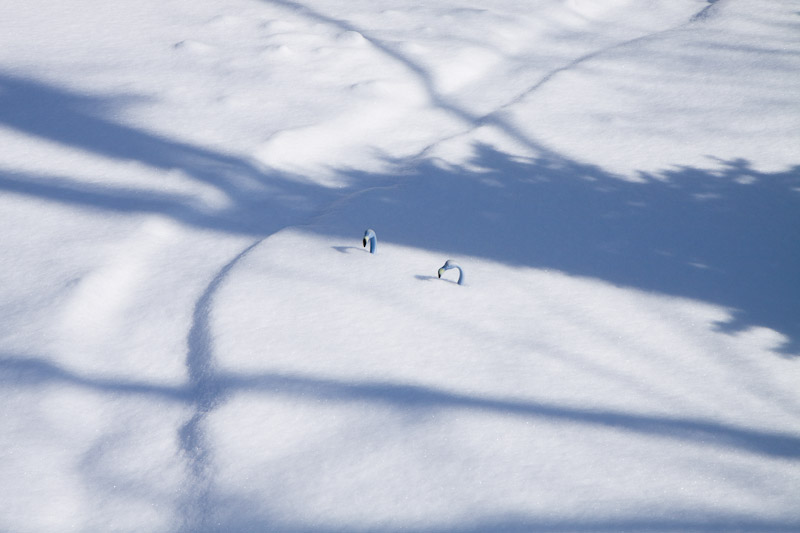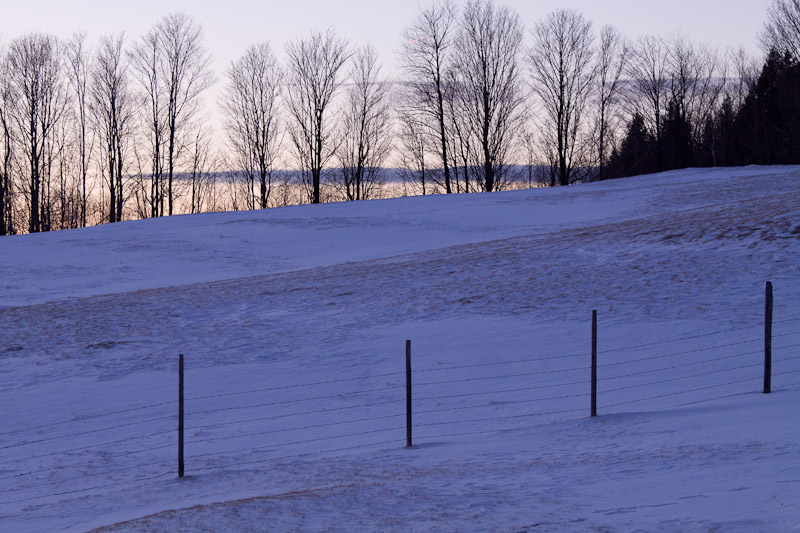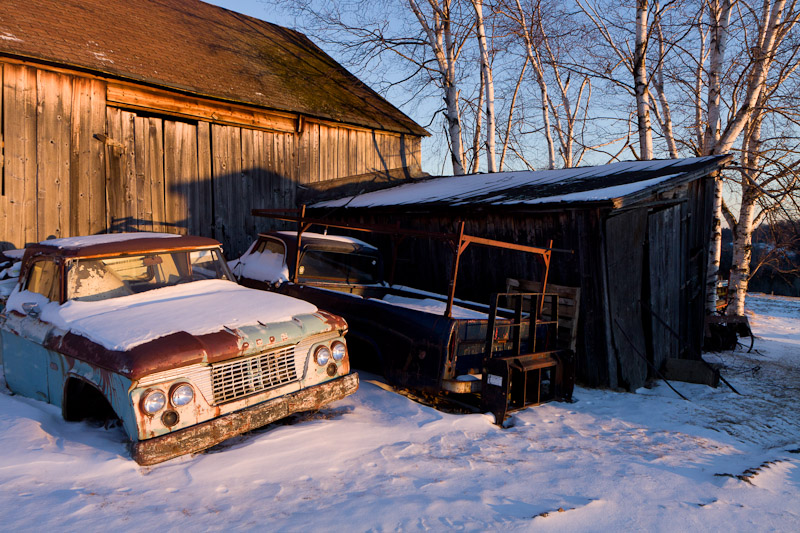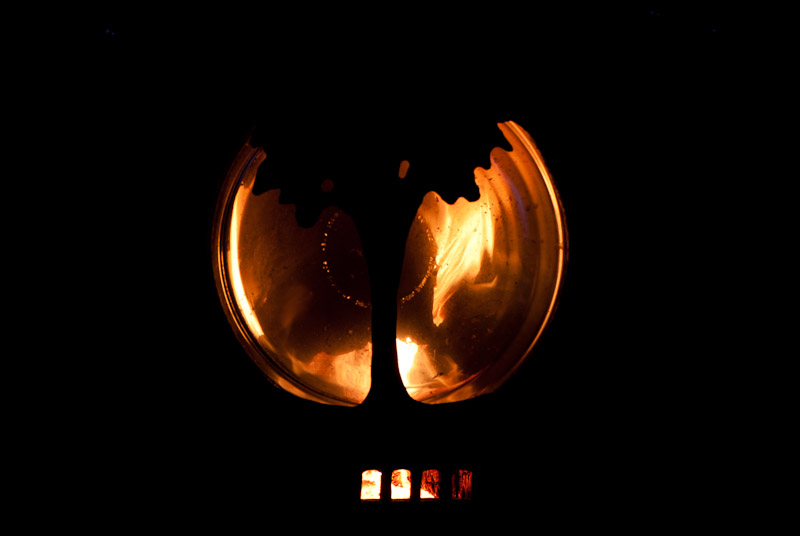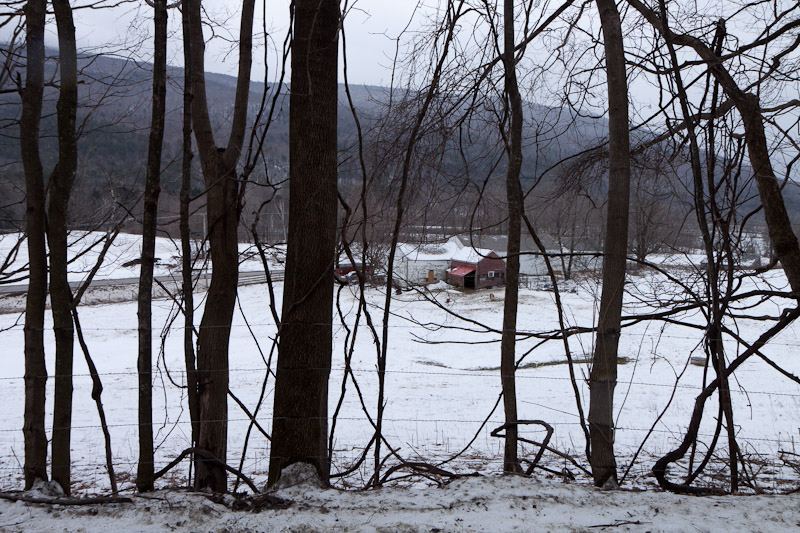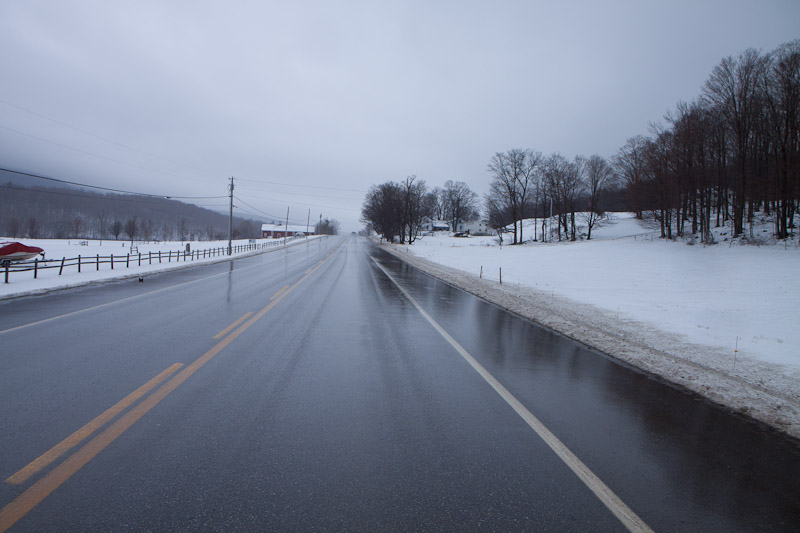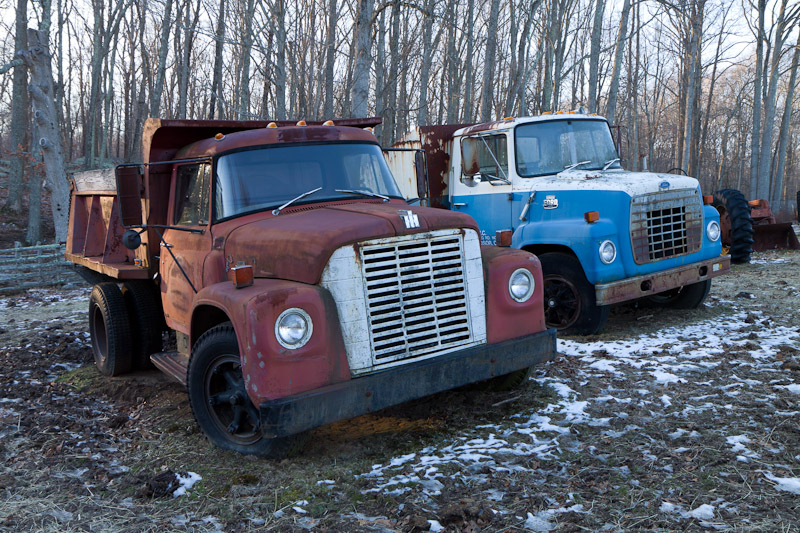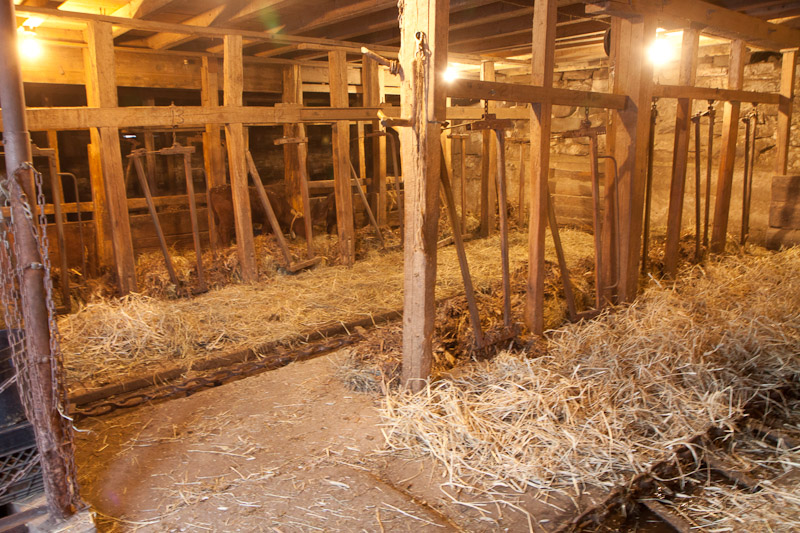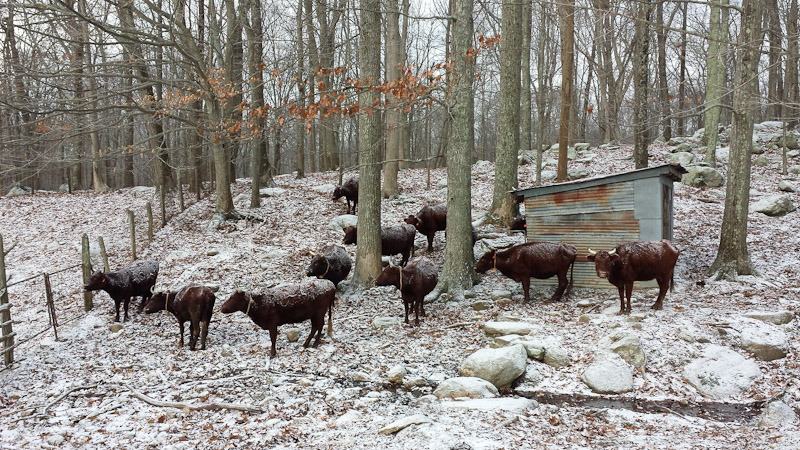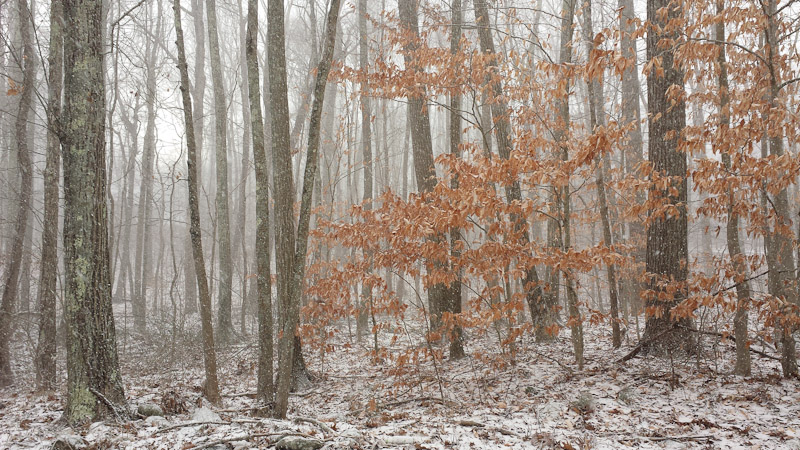{ 0 comments }
Posts tagged as:
winter
The evening twilight grows longer with each passing day at this time of the year. The phenomenon has long been observed, and commented upon, in these parts: “as the day lengthens, so the cold strengthens.” Well, until the end of January anyway, when, according to the hardier souls up here, winter is basically over. This photo was taken about 25 minutes after sunset (and about 30 minutes after the photo immediately below).
{ 0 comments }
I remain quite fond of these north country winters, harsh though they may be. Snowshoeing a quiet forest at dusk under a waxing moon, shoveling the driveway (ok – when the snow is light and the accumulation under 6 inches), feeling the solar gain on an early February day, or just the simple way the season turns you inward – its gifts are manifold. Perhaps the best though, are in the heat and dancing light of a good fire in a wood stove, (complete with a cast iron pot full of water to humidify the air) – these have carried me through many a winter.
{ 0 comments }
A huge storm blew through New England over the past couple of days, and when I first came upon it, driving back home from west central VT, it was a freezing rain “weather event”. This road seemed OK – it was 36 degrees after all – but when I stopped and got out to take this photo, I nearly took a header. Route 30 over the mountain from Manchester to Bratttleboro was worse, but nothing compared to coming back down Newfane Hill Road, a dirt road that had become a glare sheet of ice in the time I was visiting a friend there. My 2006 Honda Accord was a champ though, the anti-lock brakes and the lowest gear kept me in a safe 1-3 MPH range for most of the 3 mile trip, and there was some traction over on the far right side of the road. The whole VT portion of the trip was stunningly beautiful, if a touch unsuitable for roadside photography.
{ 0 comments }
See post below. This is where the cattle spend the night. They come in one at a time to the immediate left of where I was standing, and go directly to their respective stanchions, actually inserting their heads into the device, at which time John or Bonnie or a hired hand move the lever on the left clockwise to lock them in place. Notice the bedding (lighter) and the feed (darker), and the automated manure removal system. The temperature is probably in the mid 50’s when they come in, and warmer in the morning from all the body heat.
John and I talked about the cattle; he has literally spent all his life with this breed. The one story that I’ve been trying to wrap my head around was in answer to my question about coyotes – whether they ever bother the smaller ones. He said one morning a few years ago, he came into a pasture where about twenty cattle had spent the night, and saw them in a wide circle, heads facing out. It turns out a calf was born in their midst earlier that night, and with hungry coyotes on the scene, the herd had surrounded both mother and calf to protect them.
We are slowly moving towards a deeper understanding of plant and animal intelligence; the recent book “Braiding Sweetgrass” by Robin Wall Kimmerer, will nudge us even further along. She is a Native American botanist who considers plants and animals to be our oldest teachers. It’s a remarkable read, bridging as it does the worlds of myth and science, and as my friend Mike Hamer (who recommended it) said, ” it will bring a few tears to your eyes..”
{ 0 comments }
This was the scene late one afternoon in early January at Maple Breeze Farm, about two hours before dark. The temperature that night was headed toward minus five degrees, before the wind chill. It was about twenty at the time of the photo. The cattle (American Milking Devons) were clearly ready for the shelter of the barn, just out of view on the left.
{ 0 comments }
Though it was only a brief (and unexpected) squall that lasted ten minutes, it was the first time in a few years I have been out walking in a “snow storm”. The light dropped off considerably right before it came through, which should have been a clue to what was coming. Taken with my Samsung Galaxy S4.
{ 1 comment }
